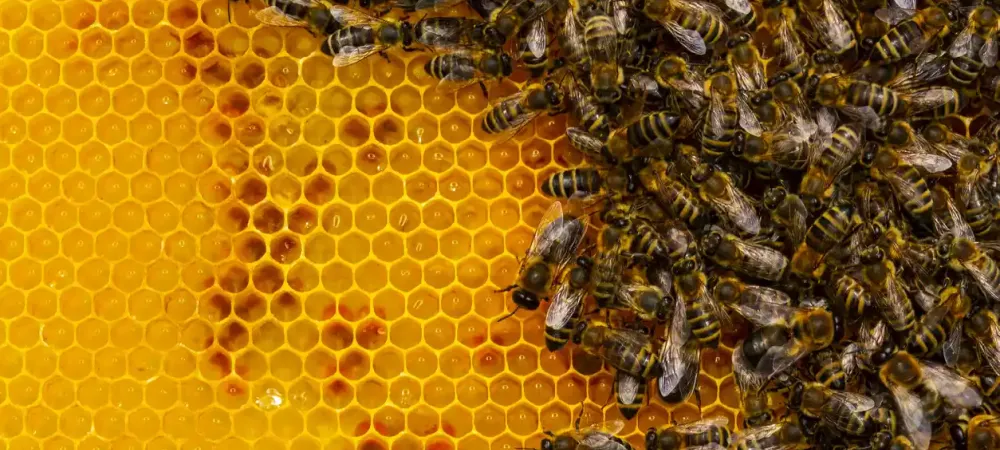What’s the Difference Between Honeybees and Africanized Honeybees?

The honeybees with which Americans are most familiar are European honeybees that began arriving in the New World with the Spanish explorers. In the centuries since, honeybees from the Old World have comprised virtually all of the bees kept for pollination and honey production.
In the 1950s, a research scientist in Brazil imported some bees from Africa to breed with European honeybees. African bees displayed greater resistance to disease and produced more honey than their European cousins. The researcher’s goal was to create a cross-bred bee that would be productive under tropical conditions. However, 26 swarms, including queens, were accidentally released into the wild. The bees began breeding with native honeybees, and their descendants quickly expanded northward. Africanized bees were first discovered in California in 1985, in Texas in 1990 and in Arizona in 1993. A study of trapped bees conducted in the Tucson area in 1994 found that 15 percent of the swarms were Africanized bees, but by 1997, 90 percent of the trapped swarms were Africanized honeybees.
Key Differences:
Both types of bees are similar in appearance, but the Africanized bees are slightly smaller. However, the difference is so minor that even experts have trouble visually identifying an Africanized bee. The key differences involve behavior.
- When there is a disturbance within 20 feet of the hive, honeybees may dispatch up to 20 guard bees. Africanized honeybees may respond to a disturbance as far away as 120 feet by dispatching hundreds of guard bees.
- After being disturbed, honeybees typically calm down in 20 to 60 minutes. Africanized bees may remain agitated and defensive for as long as 24 hours.
Honeybees only swarm once or twice per year, but Africanized bees often swarm at least 10 times annually. - Africanized bees have small swarms, sometimes no bigger than a softball; honeybees have much larger swarms.
- When selecting a nesting site, honeybees look for cavities that have a volume of approximately 10 gallons. They nest in protected, dry, clean locations that are above ground. Africanized bees tend to nest in smaller cavities, sometimes choosing places that have volumes of as little as one or two gallons. They will nest in exposed areas as well as underground receptacles, including the underground boxes housing water meters.
- A disturbed honeybee colony typically delivers between 10 and 20 stings; Africanized bees often deliver hundreds — sometimes thousands — of stings. Africanized bees will also pursue the target for a much greater distance, continuing to sting the entire way
- Africanized honeybees are easily provoked by loud noises. Vibrations from lawn mowers or other vehicles can cause agitate a hive as far away as 100 feet. Africanized bees have a larger home territory; a pedestrian as far away as 50 feet from the hive can provoke aggressive behavior.
- Honeybees usually sting if accidentally crushed or when the hive is threatened. They are unlikely to sting when foraging or seeking a new nesting site. Africanized bees can become aggressive with only slight provocation.
- Honeybees prefer sunny, warm days for foraging. Africanized honeybees tend to forage more around dawn and dusk; they are also unlikely to forego foraging when it is raining or cold.
If you have a population of bees on your property, do not attempt to deal with the hive yourself. Contact the experts at Termagon for the appropriate remediation method. Termagon also offers an extensive range of services for other pests.
